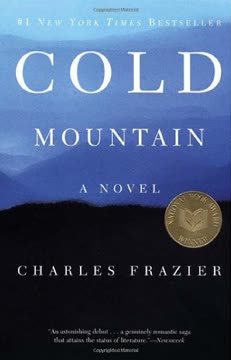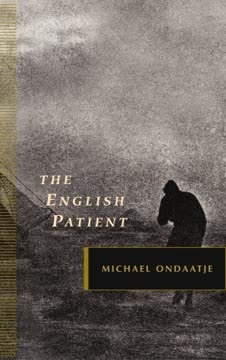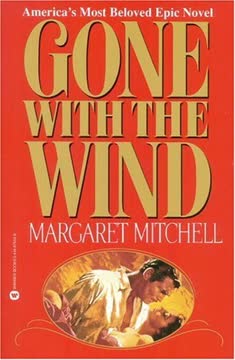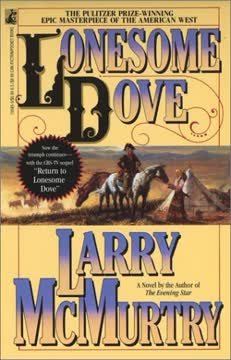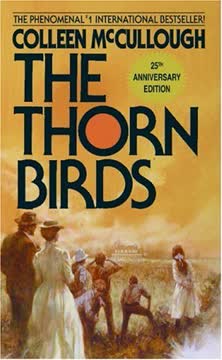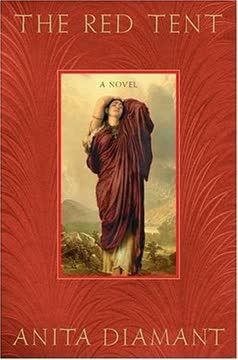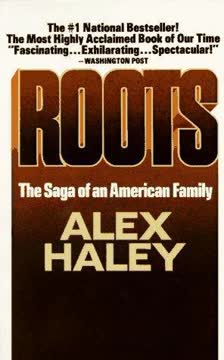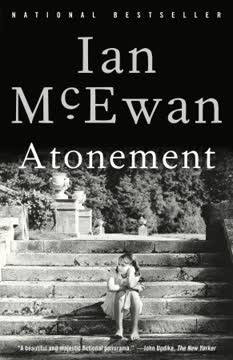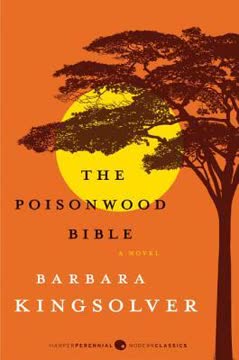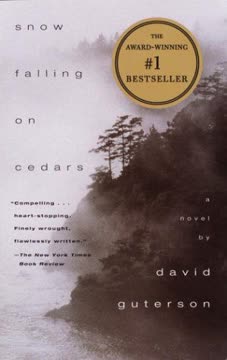Plot Summary
Wounds and Windows
Inman, a Confederate soldier, lies wounded in a hospital, his body and spirit scarred by the horrors of war. He gazes through a window, longing for the peace and beauty of his home near Cold Mountain. The world outside is both a reminder of what he's lost and a symbol of hope. Inman's memories swirl with violence and loss, but also with the possibility of return. He decides to leave the hospital, risking everything to walk home, driven by a yearning for healing and a life beyond the devastation. The journey ahead is uncertain, but the pull of home and the memory of Ada, the woman he loves, give him purpose amid the chaos.
Ada's Unraveling
Ada Monroe, newly orphaned and alone on her father's mountain farm, struggles to survive. Raised in privilege and educated in art and literature, she is unprepared for the practical demands of rural life. The farm falls into neglect, her days marked by hunger, confusion, and a sense of futility. Memories of Charleston and her father's gentle guidance haunt her, but offer little help. Ada's isolation is profound, her grief compounded by the war's encroachment and the community's indifference. She is caught between worlds, unable to return to her past and uncertain how to shape her future, her spirit as untended as the land she inhabits.
Ruby Arrives
Ruby, a tough, resourceful young woman, arrives at Ada's door, offering help on her own terms. She is the opposite of Ada: practical, unsentimental, and deeply knowledgeable about the land. Ruby insists on equality, refusing to be a servant. Together, they begin to reclaim the farm, learning from each other. Ada's world expands as she is initiated into the rhythms of planting, harvesting, and barter. Ruby's presence brings structure and hope, but also challenges Ada's assumptions about class, gender, and survival. Their partnership is uneasy but transformative, marking the start of Ada's journey toward self-reliance and belonging.
The Long Walk Home
Inman slips away from the hospital, determined to walk hundreds of miles back to Cold Mountain. The landscape is both beautiful and treacherous, filled with reminders of war's brutality and the indifference of nature. He encounters strangers—some kind, some dangerous—each encounter testing his resolve and humanity. Memories of battle, loss, and Ada accompany him, mingling with dreams and visions. Hunger, injury, and the threat of capture by the Home Guard shadow his every step. Yet, the idea of home and the hope of reunion with Ada sustain him, even as the world seems bent on his destruction.
War's Bitter Harvest
The war's reach is felt in every corner of the land. The Home Guard, led by the ruthless Teague, hunts deserters and outliers, sowing fear and cruelty. Families are torn apart, farms are raided, and old codes of honor are upended. Inman witnesses and endures acts of senseless violence, his spirit battered by the realization that the war has unleashed a deeper savagery. Meanwhile, Ada and Ruby must navigate a world where law and order have broken down, relying on their wits and each other to survive. The mountains, once a refuge, become a place of exile and danger.
Lessons in Survival
Under Ruby's tutelage, Ada learns to work the land, barter, and make do with little. The daily tasks of farming—planting, harvesting, preserving—become acts of resilience and self-discovery. Ada's hands grow calloused, her mind attuned to the cycles of nature. She finds unexpected joy in the work, a sense of purpose that had eluded her in her former life. Ruby, too, is changed by the partnership, finding in Ada a friend and equal. Together, they create a fragile but real sense of home, even as the world outside remains uncertain and threatening.
Encounters and Omens
Both Inman and Ada are shaped by encounters with others—blind men, outcasts, musicians, and wanderers—each offering lessons or warnings. Inman's journey is marked by omens and dreams, from the flight of crows to the stories of Cherokee magic and the vision of a better world beyond the visible. Ada, too, is haunted by dreams and memories, her sense of self shifting as she confronts loss and possibility. The land itself seems alive with meaning, its creatures and weather offering both threat and comfort. The boundaries between the seen and unseen blur, deepening the novel's sense of mystery and fate.
Barter and Becoming
As resources dwindle, Ada and Ruby turn to barter, trading Ada's piano for livestock and supplies. The act is both practical and symbolic—a letting go of the past and an embrace of a new identity. The farm becomes more productive, their skills and confidence growing. Ada's transformation is mirrored in the changing seasons, the land's renewal echoing her own. Yet, the past is never far away, and the war's shadow lingers. The act of becoming is ongoing, marked by both gain and loss, as the women forge a life that is both hard and deeply their own.
Music and Memory
Music weaves through the lives of the characters, offering solace, memory, and connection. Stobrod, Ruby's estranged father, reappears as a changed man, his fiddle playing now a source of meaning and redemption. The songs he plays are shaped by suffering and longing, their melodies echoing the novel's themes of loss and endurance. Music becomes a way to remember the dead, to mourn what is lost, and to imagine a future. It is both a link to the past and a fragile hope for healing, binding the characters together in a shared humanity.
The Home Guard's Shadow
The threat of the Home Guard intensifies, their violence reaching into the lives of Inman, Stobrod, and Pangle. Betrayal and brutality culminate in a massacre, leaving Stobrod gravely wounded and Pangle dead. Ruby and Ada, guided by a traumatized witness, set out into the snowbound mountains to recover the bodies. The journey is harrowing, testing their strength and resolve. The violence of the war is brought home in the most personal way, shattering any illusion of safety. Yet, in the act of caring for the wounded and burying the dead, the women affirm their commitment to life and to each other.
Loss and Longing
The aftermath of violence leaves the characters reeling. Ada and Ruby tend to Stobrod, nursing him through fever and despair. Inman, following their tracks through the snow, is driven by longing and the hope of reunion. The landscape is bleak, the future uncertain. Yet, the bonds of love and friendship offer a fragile hope. The characters are changed by loss, their grief deepening their understanding of themselves and the world. The search for meaning becomes a form of endurance, a way to keep moving forward even when the way is unclear.
The Mountain's Test
Inman and Ada are finally reunited in the snowy woods, their recognition hesitant and hard-won. The reunion is both a fulfillment of longing and a confrontation with all that has been lost. They spend a brief time together, imagining a future of peace and plenty. Yet, the war's violence is not done with them. Inman, seeking to surrender and begin anew, is ambushed and killed by the Home Guard. His death is both senseless and inevitable, the final cost of a world broken by war. Ada is left to mourn, but also to carry forward the hope they shared.
Reunion in Snow
The brief time Ada and Inman share is marked by tenderness, honesty, and the promise of a new life. They speak of the past and the future, of dreams and regrets. Their love is both a refuge and a reckoning, shaped by all they have endured. The snowbound village becomes a place of both sanctuary and farewell. Inman's death is a devastating blow, but the love they shared endures, shaping Ada's life and the lives of those around her. The reunion is both an ending and a beginning, a moment of grace amid the ruins.
A Future Imagined
In the years after the war, Ada, Ruby, and their families build a life together in Black Cove. The land is restored, children are born, and the rhythms of work and celebration return. The scars of war remain, but so does the capacity for joy and renewal. The past is honored but not allowed to define the future. The turning of the seasons becomes a measure of healing, the cycles of planting and harvest a testament to endurance. The story ends with a sense of peace hard-won, a life remade from loss and love.
Spirits and Farewells
The novel closes with scenes of family, music, and storytelling. The dead are remembered, their presence felt in the land and in the lives of the living. Music and stories become a way to keep the past alive, to honor those who are gone, and to teach the next generation. The spirits of crows, the dance of children, the changing colors of the mountain—all are woven into a tapestry of memory and hope. Farewells are inevitable, but so is the persistence of love and the promise of return.
Epilogue: Autumn's Embrace
Years later, Ada, Ruby, and their families gather for an autumn picnic under the pear tree. The land is fruitful, the children healthy and strong. The scars of the past remain, but they are part of the story, not its end. Music, laughter, and the turning leaves mark the passage of time. The novel ends with a sense of fulfillment and acceptance, the embrace of home and the knowledge that life, though marked by loss, is also rich with beauty and connection.
Characters
Inman
Inman is a Confederate soldier whose experiences in battle have left him physically and spiritually scarred. His journey home is both literal and existential—a quest to reclaim his humanity and find meaning after witnessing the worst of mankind. Inman is introspective, sensitive to beauty, and deeply affected by violence. His love for Ada is both a hope and a burden, driving him forward even as he doubts his own worth. Throughout the novel, Inman is tested by hardship, temptation, and the brutality of others. His psychological arc is one of endurance, longing, and ultimately, tragic sacrifice. He embodies the cost of war and the possibility of redemption, even as his story ends in loss.
Ada Monroe
Ada begins as an educated, sheltered woman, unprepared for the realities of rural life and the chaos of war. The death of her father and the collapse of her world force her into a struggle for survival. Through her partnership with Ruby, Ada learns resilience, practical skills, and a new sense of self. Her journey is one of awakening—shedding old identities and embracing the demands and joys of the land. Ada's relationship with Inman is central, but her growth is also independent, marked by grief, friendship, and the forging of a new home. Psychologically, she moves from passivity and despair to agency and hope, her character a testament to the power of adaptation and connection.
Ruby Thewes
Ruby is a force of nature—practical, unsentimental, and deeply attuned to the rhythms of the land. Raised in hardship and abandoned by her father, she is self-taught and self-reliant. Ruby's partnership with Ada is transformative for both, challenging social norms and creating a new model of family and work. She is skeptical of sentimentality, wary of men, and slow to trust, but her loyalty is fierce. Ruby's psychological complexity lies in her blend of toughness and vulnerability, her longing for belonging, and her eventual reconciliation with her father. She represents the possibility of survival through knowledge, will, and the refusal to be defined by the past.
Stobrod Thewes
Stobrod is Ruby's estranged father, a shiftless, unreliable man transformed by the war and his discovery of music. His fiddle playing becomes a source of meaning and redemption, a way to connect with others and atone for past failures. Stobrod is both comic and tragic—a man marked by weakness but capable of change. His relationship with Ruby is fraught, shaped by abandonment and disappointment, but also by the possibility of forgiveness. Psychologically, Stobrod embodies the novel's themes of loss, regret, and the search for grace amid brokenness.
Teague
Teague leads the Home Guard, enforcing Confederate law with brutality and self-interest. He is a figure of fear and violence, his actions driven by power, resentment, and a warped sense of order. Teague's presence in the novel represents the breakdown of community and the rise of savagery in the absence of justice. Psychologically, he is both a product and an agent of the war's moral collapse, his character a warning of what happens when violence becomes its own justification.
Pangle
Pangle is a gentle, mentally slow young man who becomes Stobrod's companion and musical partner. His innocence and joy in music make his death at the hands of the Home Guard especially tragic. Pangle's character highlights the vulnerability of the weak and the senselessness of war's violence. He is remembered with tenderness by those who loved him, his loss a symbol of all that is destroyed by cruelty and indifference.
The Goatwoman
The Goatwoman is a mysterious figure Inman encounters on his journey—a solitary, self-sufficient woman living in the mountains. She offers Inman food, medicine, and philosophical conversation, embodying an alternative to the world's violence and chaos. Her presence is both practical and symbolic, representing the possibility of healing, the wisdom of nature, and the value of solitude. Psychologically, she is content in her isolation, her life a testament to endurance and the search for meaning beyond society's norms.
Sara
Sara is a young woman Inman meets, struggling to survive alone with her infant after her husband's death. Her encounter with Inman is marked by mutual need, vulnerability, and fleeting intimacy. Sara's story is one of loss, resilience, and the ongoing toll of war on the innocent. She represents the countless women left behind, their lives upended and their futures uncertain. Psychologically, Sara is both fragile and strong, her grief deep but her will to survive unbroken.
Monroe
Monroe is a learned, gentle man whose death leaves Ada adrift. His influence shapes her values and her initial helplessness, but also provides a foundation for her later growth. Monroe's sermons and worldview are woven through the novel, offering both comfort and challenge. Psychologically, he represents the past—its comforts, limitations, and the necessity of moving beyond it. His memory is both a burden and a guide for Ada as she forges a new life.
Ruby's Mother (Absent Presence)
Though never present in the narrative, Ruby's Mother's absence is a defining force in Ruby's life. Her early death leaves Ruby to fend for herself, shaping her independence, mistrust, and longing for connection. The lack of maternal guidance is both a wound and a source of strength, driving Ruby to create her own family and sense of belonging. Psychologically, this absence is a key to understanding Ruby's motivations, fears, and eventual capacity for love and forgiveness.
Plot Devices
Dual Narrative Structure
The novel alternates between Inman's perilous journey home and Ada's struggle to survive and adapt on the farm. This structure allows for a deep exploration of both characters' inner lives and the contrasting challenges they face. The convergence of their stories in the final chapters heightens the emotional impact, creating a sense of inevitability and fate. The dual narrative also serves to highlight themes of exile, longing, and the search for home.
Foreshadowing and Omens
Throughout the novel, omens—crows, dreams, weather, and encounters with strangers—foreshadow events and deepen the sense of a world governed by forces beyond human control. Inman's recurring dreams, Ada's visions, and the stories of Cherokee magic all contribute to an atmosphere of mystery and foreboding. These devices reinforce the novel's themes of destiny, loss, and the thin boundary between the seen and unseen.
Symbolism of Nature and the Land
The landscape is more than a backdrop; it is a living presence, shaping the characters' experiences and reflecting their inner states. Cold Mountain itself is a symbol of home, longing, and the possibility of renewal. The changing seasons mirror the characters' transformations, while the details of plants, animals, and weather ground the story in a specific, tangible reality. Nature is both indifferent and redemptive, a source of threat and healing.
Music and Storytelling
Music and storytelling are woven throughout the novel, serving as means of connection, remembrance, and resistance. Stobrod's fiddle, the songs of the mountains, and the stories told by various characters create a sense of continuity amid chaos. These devices also serve as acts of defiance against loss and violence, preserving what is valuable and offering hope for the future.
Violence and Redemption
The novel does not shy away from the brutality of war and its aftermath. Violence is depicted in all its senselessness and cruelty, but the possibility of redemption—through love, work, music, and memory—remains. The characters are tested by suffering, and their responses reveal both the depths of human depravity and the capacity for endurance and forgiveness. The interplay of violence and redemption is central to the novel's emotional and philosophical arc.
Analysis
Cold Mountain is a meditation on the costs of war, the resilience of the human spirit, and the possibility of renewal amid devastation. Through the parallel journeys of Inman and Ada, the novel explores themes of exile, longing, and the search for home—both literal and spiritual. The land itself is a central character, its beauty and indifference shaping the fates of those who inhabit it. The story is marked by loss—of loved ones, innocence, and the old world—but also by the forging of new identities and communities. The partnership between Ada and Ruby challenges traditional gender roles and offers a vision of survival through cooperation and mutual respect. Music, storytelling, and the cycles of nature provide solace and meaning, even as violence and grief threaten to overwhelm. Inman's tragic end underscores the novel's realism and refusal of easy redemption, yet the epilogue affirms the endurance of love, memory, and the possibility of peace. Cold Mountain ultimately asks what it means to come home—to oneself, to others, and to the world—and suggests that, though the journey is fraught with suffering, the act of seeking connection and meaning is itself a form of grace.
Last updated:
Review Summary
Cold Mountain is a highly acclaimed historical novel set during the American Civil War. While many readers praise its lyrical prose, vivid characters, and powerful themes of love and survival, some find it slow-paced and overly descriptive. The story follows Confederate deserter Inman's perilous journey home to Ada, who struggles to manage her father's farm with help from the resourceful Ruby. The book's portrayal of nature, war's impact, and human resilience resonates with many, though opinions on its ending are mixed.
Similar Books
Download PDF
Download EPUB
.epub digital book format is ideal for reading ebooks on phones, tablets, and e-readers.
